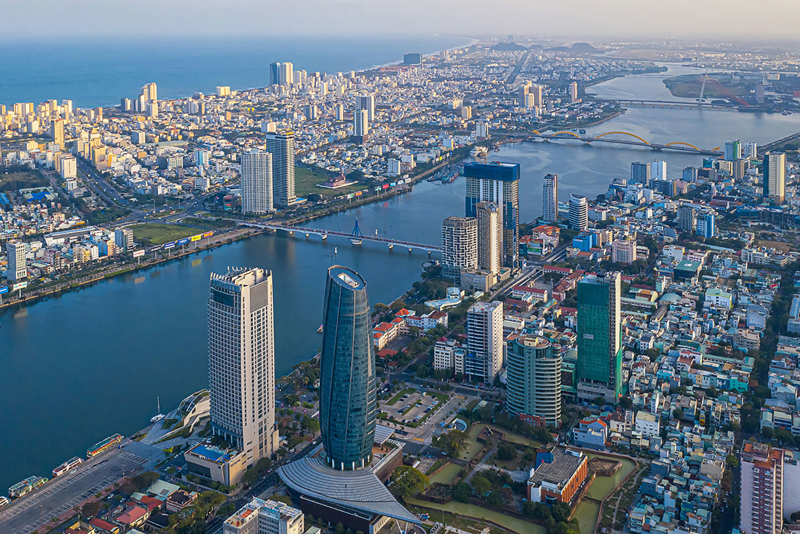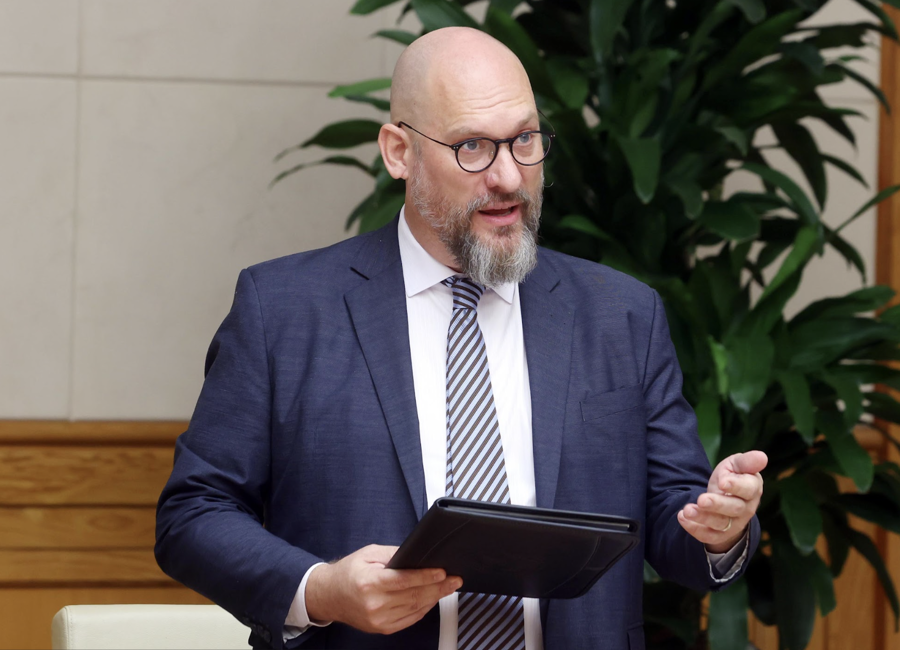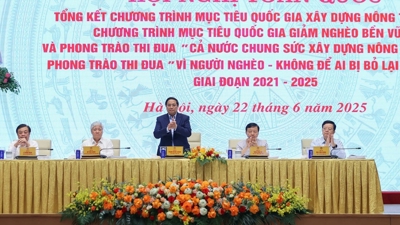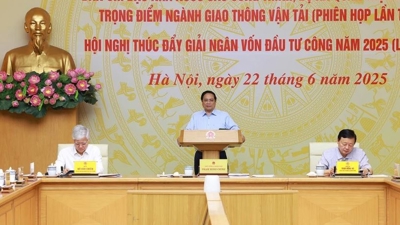Building Vietnam’s international financial future: Why a dual-hub model matters
Vietnam should build a multi-hub financial system - positioning Da Nang as an innovation testbed and green finance complement to Ho Chi Minh City.

The idea of Vietnam establishing a world-class international financial center is no longer theoretical. It is now a nationally endorsed initiative, backed by the Politburo, formally launched by both Da Nang and Ho Chi Minh City in January, and steadily progressing toward National Assembly approval.
Speaking at the hybrid conference chaired by Permanent Deputy Prime Minister Nguyen Hoa Binh in Hanoi on May 20 - held to discuss a draft resolution of the National Assembly on the establishment of an international financial center (IFC) in Vietnam - Mr. Rich McClellan, Global Ambassador of Terne Holdings and former Founding Country Director of the Tony Blair Institute for Global Change in Vietnam, raised a critical question: What kind of IFC are we building?
Over the past decade, the most successful new IFCs have not been confined to a single location. Instead, they have evolved as multi-node ecosystems, with different cities performing complementary functions, often tailored to their specific comparative advantages.

Learning from global models
Speaking on the potential for Vietnam to build an IFC, Mr. McClellan urged policymakers and investors alike to look beyond a single-city model. Drawing inspiration from global precedents, he emphasized that Vietnam can, and should, apply the same logic seen in markets like the UAE, China, and the UK. In Dubai, global finance takes center stage, while Abu Dhabi leads in regulatory innovation. Shanghai drives capital markets in China, but it is Shenzhen that has emerged as a fintech and digital asset powerhouse, with Hainan offering a safe space for sandbox experimentation. Even the UK, often associated with London’s financial dominance, relies on Edinburgh for insurance, asset management, and regulatory innovation.
“This is not about duplication,” Mr. McClellan stressed. “It’s about de-risking the model, distributing economic opportunity, and creating space for innovation that might be difficult to do in an already congested or globally scrutinized environment.”
He also made the case that this multi-hub model aligns with Vietnam’s ambitions for emerging market reclassification. “As many of you know, a transition to emerging market status would unlock billions of dollars of institutional funding from passive funds,” he said. Notably, diversification beyond a single financial hub is often cited as a requirement by major index providers such as MSCI.
Beyond international positioning, Mr. McClellan noted that a multi-node financial system would help safeguard national resilience. “It ensures that the IFC we create isn’t vulnerable to any single geographic chokepoint, demographic bottleneck, or infrastructure constraint.”
Building on natural strengths
In making the case for Da Nang’s role within this strategy, Mr. McClellan pointed out that while some cities must be molded into financial centers, others already carry the DNA of one. “Da Nang is very much the latter,” he stated.
Geography is a key advantage. The city sits at the heart of the East–West Economic Corridor, connecting Vietnam to Laos, Thailand, and Myanmar. As Vietnam’s only major coastal city along that axis, it is uniquely positioned as a logistics and financial gateway for the Greater Mekong Subregion.
Infrastructure in Da Nang is already ahead of the curve. Assets like the Lien Chieu deep-sea port, a growing international airport, the Da Nang Hi-Tech Park, and a planned Free Trade Zone offer an advanced platform for trade, finance, and innovation—rarely seen outside Hanoi or Ho Chi Minh City.
The city also boasts a strong talent pipeline. With more than 22,000 university graduates per year, including in technology, international business, and finance, Da Nang presents a credible labor force for mid- to high-end financial services. Lower operating costs compared to the country’s two major cities further enhance its competitiveness.
Just as importantly, Da Nang offers space, both physically and administratively. Unlike larger metropolises, it retains zoning flexibility, room for greenfield development, and a proactive local government experienced in rolling out reforms quickly. This makes it well-suited to host pilot programs and special financial regimes.
Finally, Mr. McClellan underlined the strategic logic of location. “There are 14 provinces in central Vietnam that are not easily served by institutions in the north or south,” he said. “If we want national impact, we need national access.”
A complement, not a competitor
What Da Nang can offer is not a mirror of Ho Chi Minh City’s financial functions, but a complement to them. Mr. McClellan highlighted several areas where the central city could assume distinct, high-impact roles.
He envisioned Da Nang as a regulatory and innovation testbed. Its scale, cost efficiency, and responsive governance make it an ideal location to trial new financial technologies, from eKYC systems and tokenized securities to digital payment platforms. “The city can help Vietnam become a safe but forward-leaning regulator,” he suggested.
In alignment with the country’s climate ambitions, Da Nang could emerge as a center for green finance. Pilots for carbon markets, green bonds, and climate-linked insurance could be anchored here, building on the city’s existing reputation for environmental governance.
Given its port infrastructure and trade flows, the city is also poised to serve as a clearing and financing hub for key commodities like coffee, seafood, and rubber. Such a role would enhance Vietnam’s ability to meet emerging carbon and traceability standards in global supply chains.
Mr. McClellan further pointed to the rising demand for secure custody of both physical and digital high-value assets. Inspired by global models like Le Freeport, he suggested Da Nang could house pilot facilities for tokenized wealth and luxury goods storage.
Lastly, Da Nang’s vibrant startup ecosystem, particularly in tech and digital services, could be elevated through financial infrastructure such as accelerators, early-stage capital, and cross-border investment channels. “With the right tools, the city could play a national role in financing Vietnam’s innovation economy,” he added.
Built on complementary strengths
In closing, Mr. McClellan returned to the broader vision. “If Vietnam wants to build a globally respected financial center, we need to think of it not just as a zone, but as a system,” he said. Da Nang is not a competitor to Ho Chi Minh City but a complementary enabler —offering balance, specialization, and a testing ground for bold ideas that may not fit the constraints of the country’s southern hub.
He emphasized that Da Nang’s readiness is not theoretical. “Investor interest is real. Local leadership is engaged. Infrastructure is coming online.” The city, in his words, reflects Vietnam’s commitment to equitable regional development - “something that investors notice and respect.”
His final call to action was clear: “I urge you to support a model that leverages both HCMC and Da Nang - each playing a distinct role in delivering Vietnam’s financial future.”







